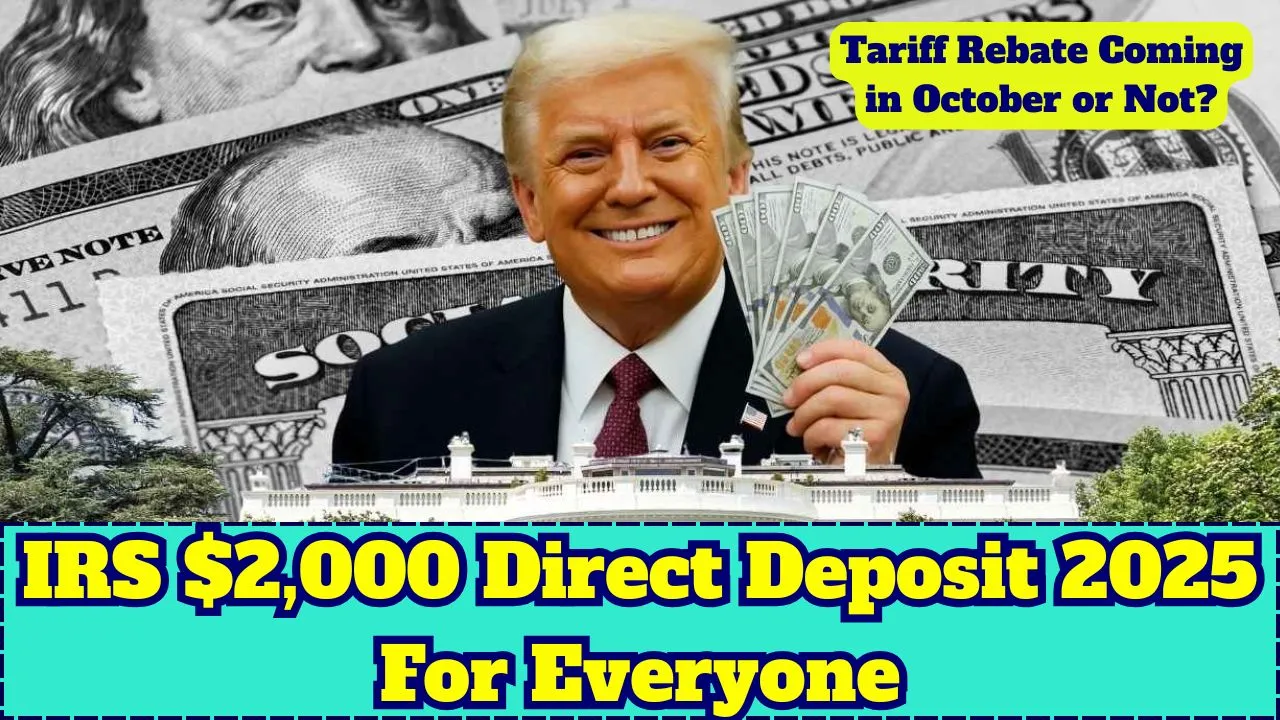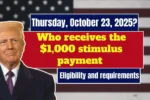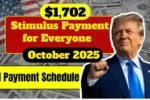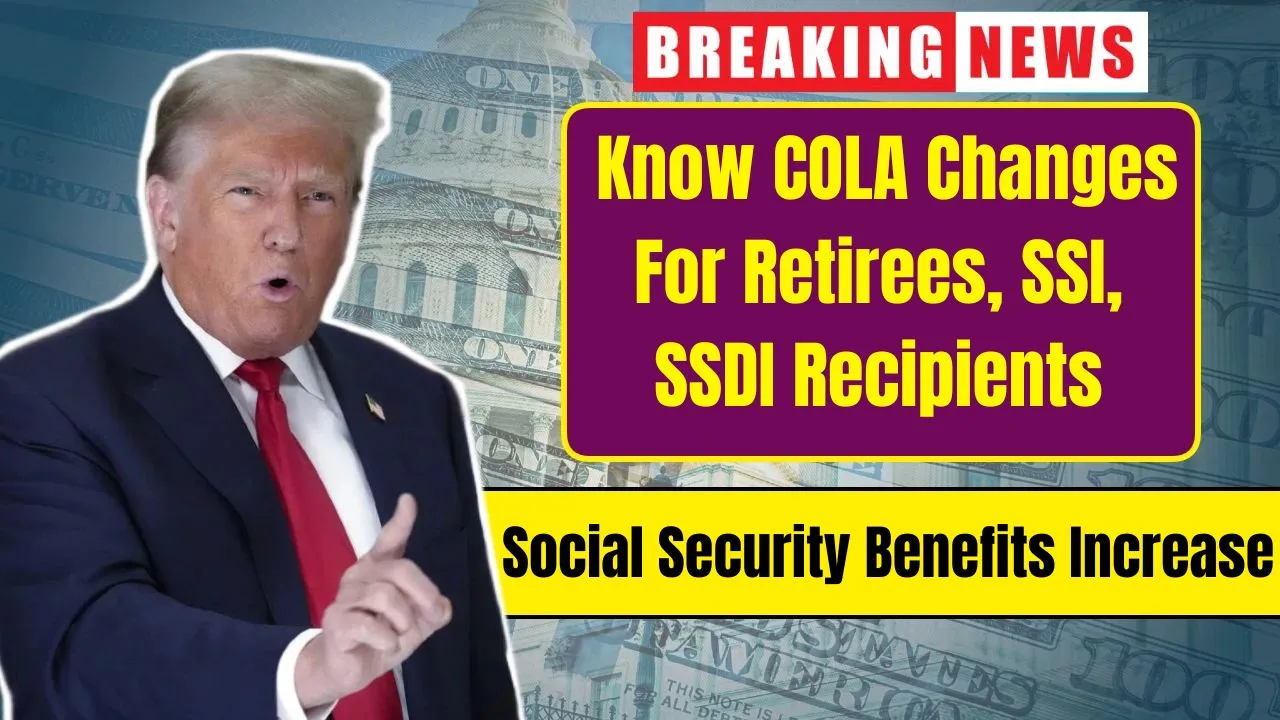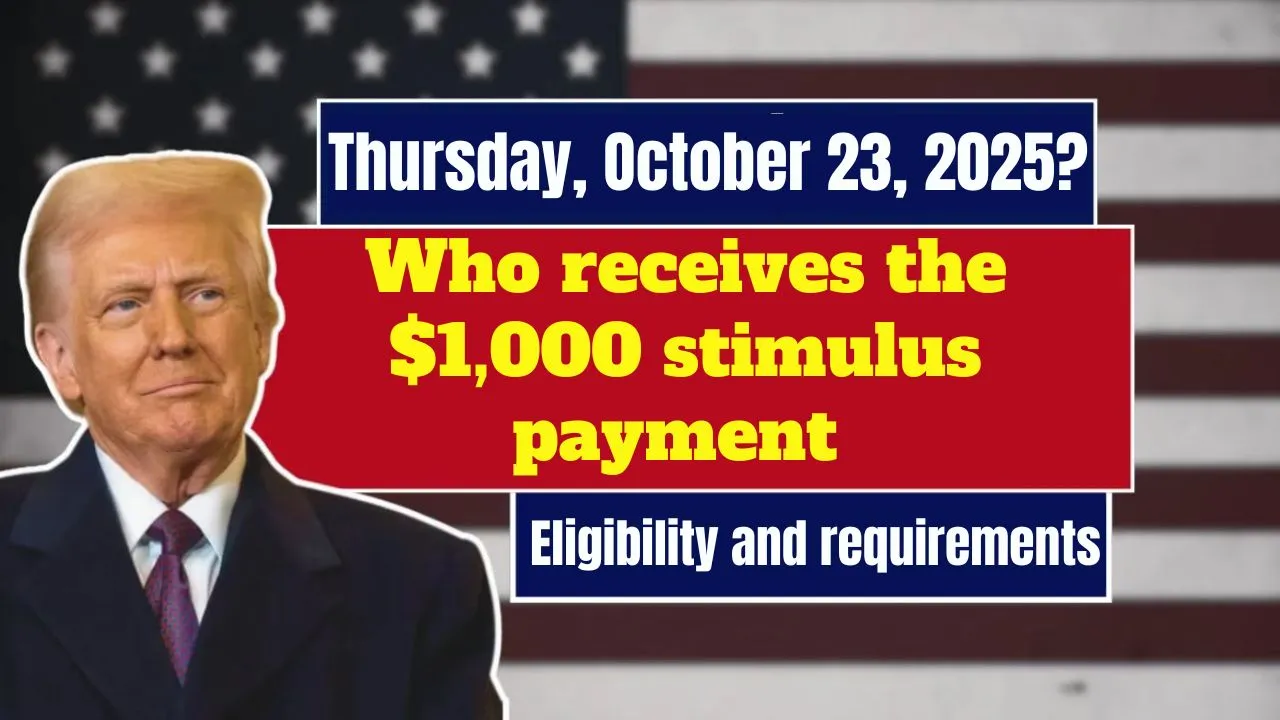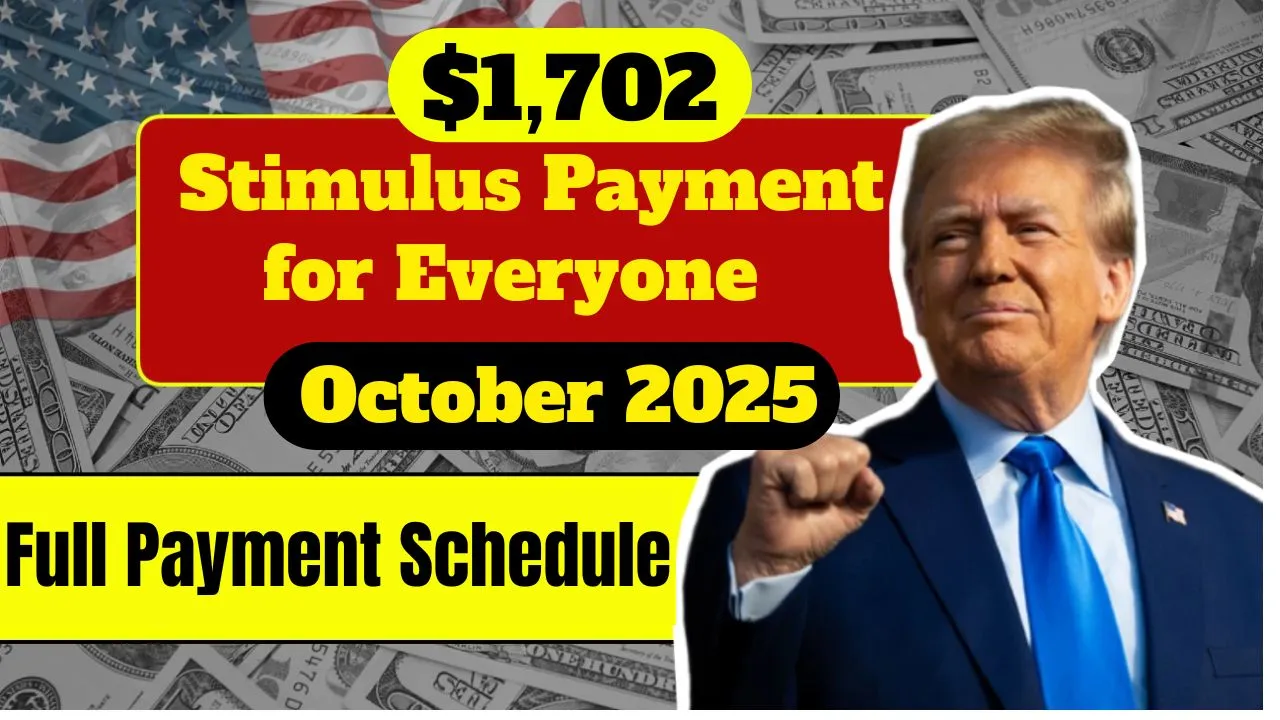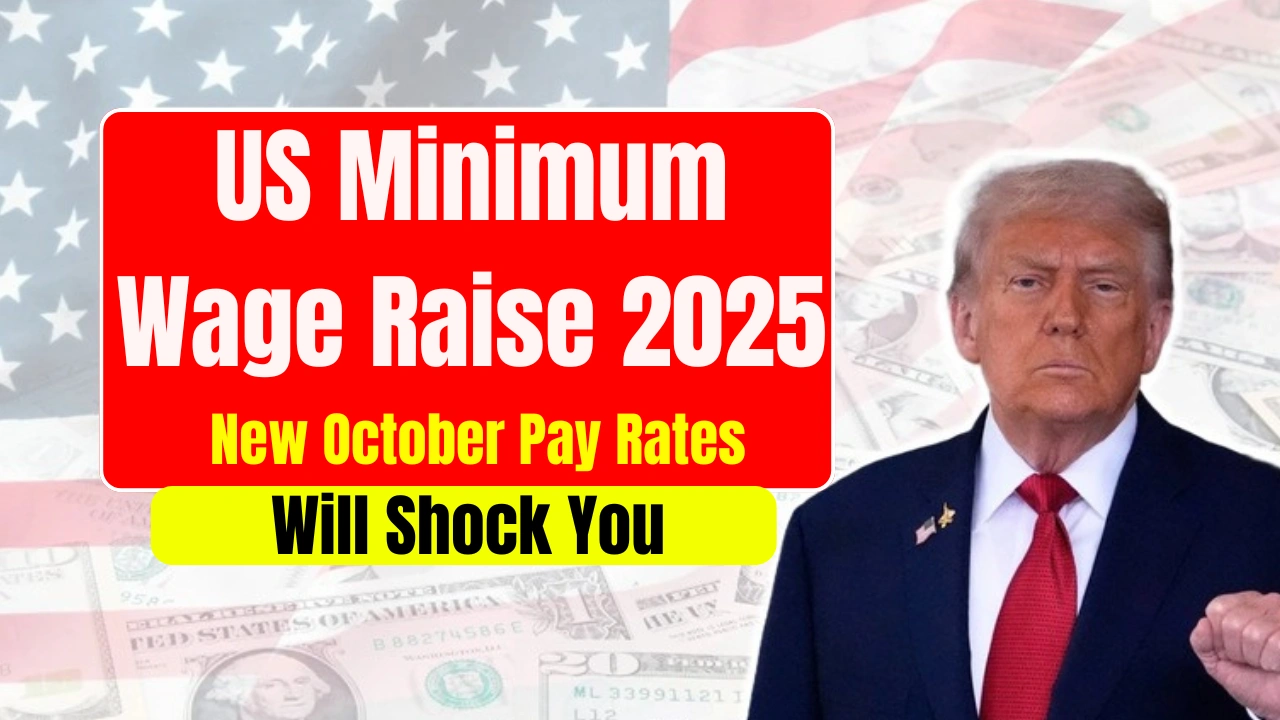Lately, the internet has been buzzing with talk of the $2,000 Direct Deposit 2025. Social media posts, viral videos, and even some misleading news headlines are claiming that Americans will receive direct payments this October. Many are wondering if these deposits are real, who is eligible, and whether this is another round of government stimulus checks. The idea has gained traction after comments made by President Donald Trump during a recent interview, where he hinted at possible payments funded by tariff revenues.
If you are hearing about the $2,000 Direct Deposit 2025 and are unsure what is fact and what is fiction, you are not alone. This article breaks down everything you need to know about the rumored direct deposits, what President Trump actually said, the role of the IRS, and what the legal and financial roadblocks look like. We will also explore how tariff revenues work, what the IRS has officially stated, and why you should be cautious about what you see online.
$2,000 Direct Deposit 2025: Is It Really Happening?
The talk around the $2,000 Direct Deposit 2025 has gained a lot of attention lately, but there is no confirmed program in place to make it happen. Despite the growing buzz, the federal government has not launched or approved any official plan to distribute direct payments funded by tariff revenue. The idea was mentioned by former President Donald Trump, who spoke about possibly using tariff collections to provide a “dividend” to the American people. He floated the possibility of payments between $1,000 and $2,000, but it was shared as a concept, not a policy. There is currently no legislation, executive order, or directive from the Treasury or Congress authorizing such payments, and the IRS has no legal authority to process them.
Overview Table: IRS $2,000 Direct Deposit 2025
| Topic | Details |
| Proposal Origin | Statement from President Donald Trump during an interview |
| Proposed Amount | Between $1,000 and $2,000 per person |
| Payment Type | Direct deposit, if approved |
| Official Program Status | Not approved or enacted by Congress |
| IRS Role | No authority or directive to issue payments |
| Tariff Revenue Source | Taxes collected from imported goods |
| September 2025 Tariff Revenue | $31.3 billion collected |
| Year-to-date Tariff Revenue | $214.9 billion in 2025 |
| Supreme Court Involvement | Reviewing legality of certain tariff implementations |
| Public Advisory | No verified payments expected in October 2025 |
What President Trump Actually Said About Tariff Rebates
President Trump recently suggested that his administration was exploring the idea of distributing tariff revenue to the American people. He described it as giving citizens a share of what the country earns through tariffs on imported goods. During the interview, he mentioned the possibility of sending out checks ranging from $1,000 to $2,000 per person. He framed it as a reward for the people, acknowledging their role in supporting American-made products.
However, it is important to point out that his comments were theoretical. The White House later clarified that Trump had only discussed the concept internally with his advisors and that no official decision had been made. At this point, it is just a floating idea, not a confirmed government policy or financial relief initiative.
IRS Response: No Confirmation or Payment Authority
Despite how widespread the rumors have become, the IRS has made no official announcement regarding $2,000 Direct Deposit 2025. The agency cannot issue payments unless it has explicit instructions from Congress or the Department of Treasury. So far, no such instruction has been given.
In fact, tariff funds are not even collected by the IRS. They are managed by U.S. Customs and Border Protection. If the government were to repurpose that money for citizen payouts, it would require a brand-new legal and logistical framework. Until that happens, the IRS is not involved and cannot process any such payments.
Understanding Tariff Revenues and Their Economic Effects
Tariffs are taxes on imported goods, and in 2025, the United States has seen record levels of revenue from these sources. The Treasury reported $31.3 billion collected in just September, with a total of $214.9 billion collected so far this year. These revenues come mostly from U.S. importers, who often pass on the costs to consumers by raising prices on items like electronics, automobiles, and food.
While it may seem like a good idea to redistribute this money back to citizens, it is not that simple. Tariffs can hurt the economy by making products more expensive for everyday people. Even if the government has a surplus from tariffs, using it for direct payments could have ripple effects on inflation and the cost of living.
The Legal Battle Before the Supreme Court
In August 2025, a federal appeals court raised questions about whether the current administration overstepped its authority by using emergency powers to impose certain tariffs. The case is now headed to the Supreme Court, with hearings expected in November.
This legal uncertainty adds another layer of complexity to the idea of $2,000 Direct Deposit 2025. If the Court rules against the tariffs, the funding base for these proposed payments could vanish altogether. Until the Court makes a final ruling, the future of these tariffs—and any potential rebate checks that depend on them—is uncertain.
Previous Stimulus and Rebate Proposals
The concept of distributing government revenue to citizens is not new. Earlier in 2025, Elon Musk, while leading the Department of Government Efficiency, proposed a $5,000 stimulus check funded by savings from reducing wasteful government programs. That idea was later dropped when it became clear the savings were overestimated.
Another example is Senator Josh Hawley’s American Worker Rebate Act, which proposed payments of $600 per adult and child, funded by tariffs. That bill has not moved forward in the Senate and remains stalled. These examples show that while the concept is popular, turning it into policy is a much harder task.
Claim vs. Reality
The internet is full of bold claims, but what is the reality? Let us break it down clearly:
- Claim: The IRS will send $2,000 payments in October 2025
Reality: False. No program has been approved or confirmed. - Claim: Americans will get between $1,000 and $2,000 soon
Reality: Unconfirmed. This is only an idea being discussed. - Claim: Tariff revenues are already being distributed
Reality: Incorrect. No mechanism or approval exists for that. - Claim: The Supreme Court case does not affect the plan
Reality: Misleading. The legality of tariffs is under review, which directly affects funding.
Public Caution and Official Verification
It is natural to get excited at the thought of receiving extra money, especially during uncertain times. But it is just as important to stay informed and cautious. If you hear about government payments, always check trusted sources first. Look for updates from the official IRS or Treasury Department websites. Do not rely on social media videos, rumors, or unofficial blogs.
For now, there is no confirmed $2,000 Direct Deposit 2025. Any future program would need to go through Congress, receive funding approval, and have a clear legal structure in place.
FAQs
No, the IRS has not announced or confirmed any such payments.
There are no confirmed plans or programs for payments in October 2025.
No, he only discussed the idea as a possibility, not an official policy.
Only if Congress passes a new law allowing it. As of now, that has not happened.
Check official sources like IRS.gov and Treasury.gov for accurate and verified information.
